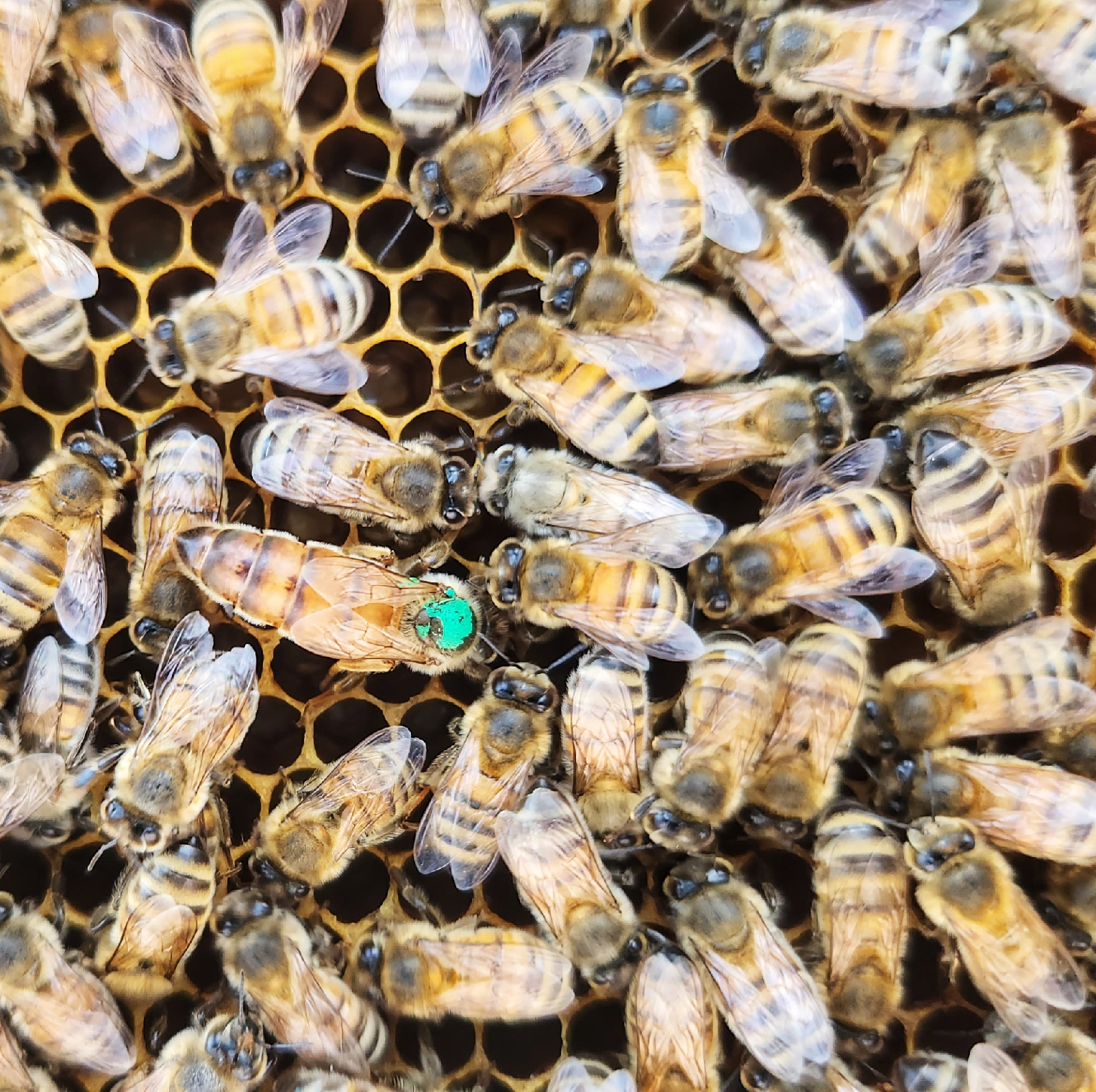Winter is always a tenuous time for beekeeping. You feed the bees in the fall so they can build up honey resources to live for the coming months, then you shut them away. Fingers crossed. If things go well, your bees will be thriving come March. If not, you'll find a dead hive filled with bees.
Last year, I had a hive die over the winter. It was too small going into the cold months, and I should have lifeboated them with a larger hive but I did not. Live and learn.
This week I made my first official visit to the four hives (White, Blue, Periwinkle, Yellow) to check on their status. I'm happy to say they are thriving. All four still have loads of resources -- primarily sugar water converted to honey that they didn't eat over the winter.
They are already packing in pollen from all over in all kinds of colors, including yellow, olive green and even hot pink! The pollen will feed the hives' growing brood as the world wakes up and the spring nectar flow begins. (Nectar is the foundation of honey.)
These bees are the tail-end of the "winter bees" that are born fatter and longer-lived than the summer bees. Winter bees live several months, rather than the month-and-a-half for summer bees. Winter bees, basically, keep the hive alive until spring.
During my inspection, I spotted two of my queens -- Periwinkle and Yellow -- which was good. They have green dogs on their backs, indicating that they were born in 2024. This year's queens, if I make any, will get blue dots.
I also got to see a new bee emerging from her cell after completing her pupation. She is the first a thousands more to be born in the weeks to come. Bring on spring!










No comments:
Post a Comment